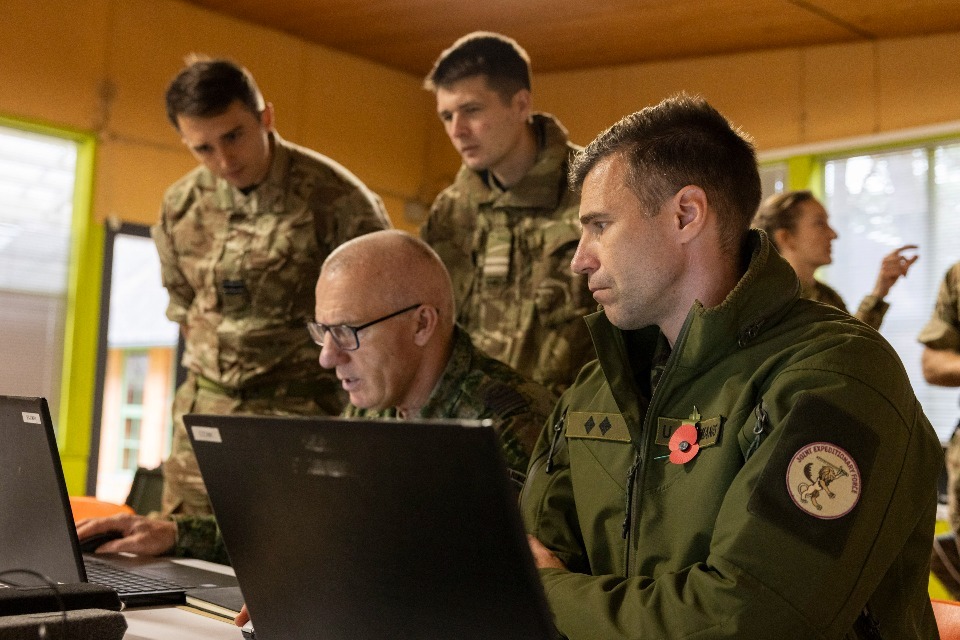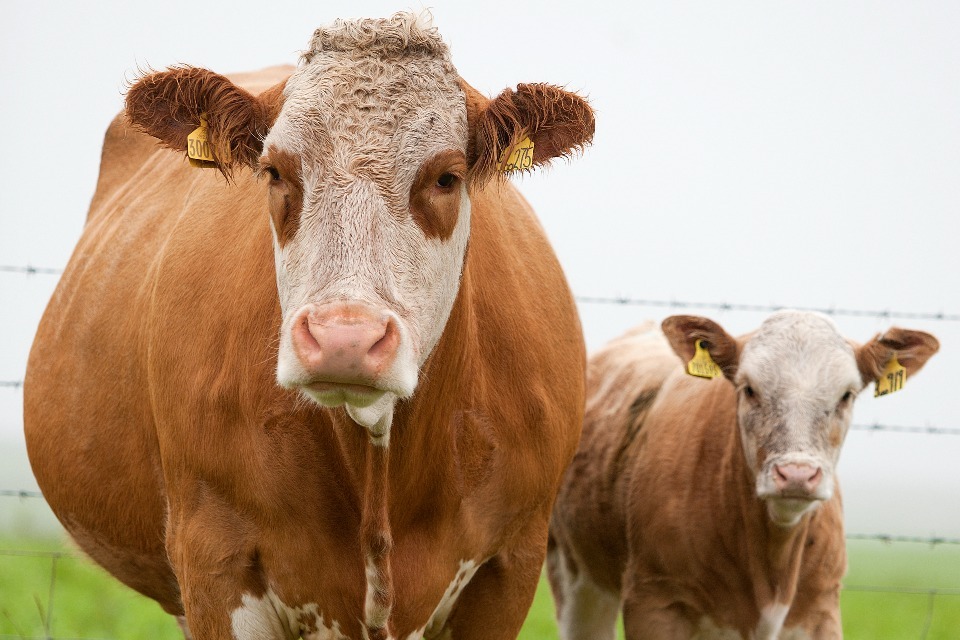Good afternoon, and to Welsh colleagues in the room, prynhawn da.
I’m delighted to be here with you this afternoon, and for this opportunity to be a part of your annual conference. I’d like to say a few words about the Commission’s priorities, and about the ways in which I see us working with the wider charity law community during my time as CEO.
This is, of course, the 30th anniversary of the CLA conference.
Milestones like this encourage us to look back at where we’ve come from, and imagine and plan for what lies ahead.
The milestones since 1994 alone speak of the passing of one generation into the next.
We’ve had no fewer than 10 Charities Acts, including those passed in devolved parliaments. Some of this legislation has redefined charity, and the powers of the Commission as regulator, expanding our role, influence and responsibilities, ensuring that as the sector has grown and diversified, we have too, keeping pace with changing expectations and needs. The CLA will have been there, inputting, advising, consulting, every step of the way.
Many leaders have come and gone. Since the early 1990s, we’ve seen 3 Chief Commissioners of the Charity Commission, then since the 2006 Act, 5 chairs, and the same number of chief executives, including myself.
During the same period – three changes of government, with one coalition, and nine Prime Ministers.
But perhaps more significant are the fundamental technological, cultural and social changes that have unfolded since the 1990s, transforming the way in which we live, work, and communicate – and the way in which we do good for our communities and for others and the values to which our society holds.
We have seen same sex marriage legalised, we’ve seen a huge shift in attitudes towards ….. and investment in ….. mental health, women’s health and wellbeing and we’re beginning to recognise the personal, social, and economic impact of systemic issues such as loneliness and inequality.
There are many more such examples. It is worth holding in mind both how recent such progress is, and how important charities and wider civil society are in reflecting, and driving social attitudes.
Charities serve as a mirror in which society sees reflected not just how things are, but also how they could be.
Over the past 30 years, the fundamental purpose of charity has remained pretty stable, but its role and relevance to our daily lives has only increased.
From delivery of and support for emergency response services, to early years provision, medical research, and care and advocacy for the most vulnerable in our society… not to mention the work of charities in promoting the arts, cultural heritage, conservation and so on. Charities save and improve lives, cradle to grave.
Of course, charities’ status at the heart of our society rests not just on the good intentions of those involved.
Charities are trusted and valued because they are protected by a framework of statutory duties and obligations that experts such as yourselves both helped shape and importantly also help to uphold.
Your work goes far beyond advising individual charities. Your voice is crucial in helping to shape the charity law framework, ensuring it keeps pace with changing needs in society.
Looking ahead – we can’t of course say for sure where we’ll be 30 years from now.
I would wager that the pace of technological, cultural and social change will only increase.
And that our ambition will remain to ensure charities continue to be trusted as vehicles for our better nature, and that people continue to support charitable purposes with their time, money, and trust.
While our research shows that trust is currently at a 10-year high, this is not an outcome we can take for granted.
I believe there is a role for the Commission and the wider charity law community to help shape the future of charity, anticipating and responding to wider changes in society and public expectations.
In that context, there are three areas I’d like to reflect on today.
Picture the sector as the home in which we all live and which we all want to preserve for the future, and consider how you would maintain the structure for the long term.
First, there’s housekeeping and maintenance – so the things we need to do and think about now to ensure that we’re keeping the house safe and stable. This is not a small task. The building we are looking after is old, and it has many rooms and keeping it in good shape requires hard work and ingenuity.
Second are the strategic works we know we need to undertake, because of changes we already know will come. Sticking with the analogy – we know we need to insulate all our walls, because the climate is changing and energy is precious.
Third, and perhaps trickiest of all, we need to think now about the way in which the building may be used into the next generation. If we want to preserve the best of the building whilst ensuring it’s fit for future generations and not see it torn down or to fall into neglect and disrepair slowly over time due to its lack of attractiveness to new home owners – then we need to adapt it bit by bit over time ensuring it meets the needs of tomorrow’s home owners.
So first, maintenance of the sector right now. Getting the basics right today.
Here I’d like to home in on our work to support trustees through our guidance work.
This forms an important part of the Commission’s corporate strategy – one of our strategic priorities being to support charities to get it right but take robust action where we see wrongdoing and harm. Our statute of course also requires us ‘to promote compliance by charity trustees with their legal obligations’ and empowers us ‘give such advice or guidance with respect to the administration of charities as it considers appropriate’.
Good, accessible, online guidance really matters. Our strategy, again, puts this well Ultimately the sustainability of the charitable sector relies on the enthusiasm, generosity, and capability of trustees.
There are, at least, 700,000 trustees of registered charities covering nearly a million trustee positions. We are undertaking research at the moment, with Pro Bono Economics, to understand better who they are, and what their skills are. For example this work will give us a better idea of how many legal professionals are serving as trustees.
But what we already know is that the vast majority are volunteers, taking on the rewarding but challenging role of trusteeship on top of already busy lives.
They have a right to expect, from us as regulator, clear, plain English guidance on what is required of them, and some level of instruction on how to deliver on those expectations.
And this matters, because we know that the public have high expectations of trustees – research shows that the public expects charities to be efficient and effective in delivering on their purpose, and run according to high ethical standards.
Unfortunately, however, we are starting from a point where not enough trustees – our primary audience – use our guidance when undertaking their leadership roles.
Research published by the Commission earlier this year shows that only around a quarter – 26% – of trustees use our information at least once a year, whereas nearly two thirds seek advice from a trusted colleague or fellow trustee.
Yet almost all (93%) of those who have used the Commission’s information find it helpful. And those who use our guidance have a better understanding of their responsibilities – again our research shows this.
When we ask trustees why some don’t access our support, they tell us that the length and style of our older guidance can put them off.
In response, we are doing a huge amount to overhaul and improve our suite of guidance, ensuring it is not just clear in the way it explains charity law, but that it is actually used more and more by trustees. I know some lawyers mourn our longer and more detailed style of guidance. But I’d ask you to understand that our primary audience is the lay trustee, and we need them to access, understand, and action our guidance more routinely than they do at the moment.
Over the past year alone, we have produced new guidance on accepting, refusing and returning donations – guidance that is helping to underpin and grow a strong philanthropic culture in the UK, and helping trustees make decisions that are right for their charities.
We have reviewed and improved our guidance on charities and decision making, keeping to the 7 principles set out when we first published that guidance 11 years ago, and retaining all its other key points, but making the guidance more concise through smart editing based on clear writing principles. We are grateful to the many people in this room who use CC27 and the 7 principles when they are advising Boards on making decisions – this is an example of how our guidance and the advice lawyers give can work in tandem to upskill trustees and keep them making effective decisions.
Earlier this year, we updated our guidance on charities and meetings, bringing it up to date with the Zoom era, and encouraging charities to ensure their governing documents and policies keep pace with changes to the way in which people meet. This accelerated during the pandemic, during which we gave updated advice, now formalised through the redesigned guidance.
And most recently, we updated our guidance on managing finances. We have made the guide much more accessible, splitting its content into three separate pieces, making it easier for trustees to find the information that best relates to their situation, whether they may be starting to experience financial struggles or, worse, facing insolvency.
We don’t of course, produce our guidance in isolation.
Much of our resource and energy goes on working in collaboration with our partners to ensure our guidance is clear and fit for purpose.
How we do this has changed over time, and we now take a more risk-based approach, helping to ensure we can produce and publish new guidance at pace. In some cases, for example when we are producing brand new guidance or reflecting new judgments, for example following the Butler Sloss case on charity investments, the CLA is a crucial partner for us to engage and consult with. At other times, for example when our task is to refresh guidance to improve its accessibility, user-testing with charities is the most important consultative work for us to undertake.
I’m grateful for the CLA’s support and challenge over the years. I recall from my previous time at the Commission the excellent professional relationship we had and I look forward to rekindling that and hope you will continue to work with us to ensure our new guidance is legally sound, clear, and actionable. I am committed to building on our existing relationship to ensure a strong partnership on our guidance pipeline – and wider support to trustees – into the future.
Next – the big strategic works that help our house respond to big changes that we already know are heading our way.
Here I’d like to reference the important work of our horizon scanning and strategic policy work.
We have recently tackled cryptocurrency models of giving, and AI. Our approach here is not so much to provide all the answers but to help charities and the sector ask the right questions, about how these transformative technologies can be harnessed to further charities’ work and think about the risks of engaging, and the risks of not doing so. As an example, we have reminded charities that under those seven key principles mentioned earlier, trustees remain responsible for decision making in their organisation, so it is vital this process is not delegated to AI or based on AI generated content alone.
We continue to monitor both these areas, including in assessing applications from charities active in these spaces, and are keen to encourage the sector itself – and experts such as the CLA and its members – to think about how tech developments such as these might be harnessed for the sector into the future.
Ensuring legislation is fit for purpose is crucial too. Charity law is never quite done. The 2022 Act attracted fewer headlines, and less controversy than previous iterations of legislation, but it made for important efficiencies and improvements to the operation of charity, and our role in that.
Looking ahead, we continue to consider whether further strengthening of our powers to address and prevent abuse and mismanagement in charities may be valuable – enabling us to work more effectively and efficiently at a time when our resources, like those of charities, are stretched.
And then, thirdly we need to think about the next generation living in our house – about big societal shifts and how they might impact on the sector into future generations.
I am determined to use my position as CEO, and the wider convening role of the Commission, to help facilitate dialogue on the future of charity. It is not for us as the regulator in isolation to say what the sector “should” or “could” be. That is something for the sector and society more widely. However with technology changes, social media, AI, as well as societal expectations on speed of action or impact, we risk losing what is special about charity and the positive impact it has if we don’t think and adapt. We are already seeing areas where AI is having real world impact which had not been thought about in the creative sectors. So if we are to maximise the positive impacts of technology whilst mitigating the potential negative impacts then we need to think and act now. We are clear in our strategy that we will speak with authority and credibility, free from the influence of others, in areas like this.
There are great opportunities, and great challenges ahead. What are the cultural factors that will shape the future of charity? What impact do changing giving and volunteering habits, and shifting attitudes towards institutions between generations, have on the role and work of charities?
In a country where there are huge divisions of world view on fundamental issues, how can different charities continue to use their voice to campaign for the change they want to see in our society, in furtherance of their purposes, without inflaming tensions or entrenching divisions? What changes might we need to help charities respond and adapt to climate change?
The Commission’s role as regulator is not to support or champion individual charities, and it is not for us to set the direction for charities or the sector as a whole.
But we can have a role in helping the sector, and its partners in government and beyond, to ask these questions, and we can bring people together in tackling the big issues to unleash the potential of not just the sector but the people it exists to serve.
And this is where you as charity law experts, and people who care deeply about the sector, come in.
I think you have a crucial opportunity – perhaps even responsibility – to lead thought and discussion about how charities can be supported to respond to the next big generational shifts, over the next 30 years.
There is great work underway already in this space.
One example of this is this year’s research by Bayes Business School about the challenges that charity chairs might face in 30 years’ time. The research mentions the skills that might be required of chairs, the governance models that might be needed, and the future pipeline of chairs where will they come from?
We believe we have already started to respond to these issues by improving our guidance in the way described and continuing to be responsive to trustees’ needs, we are helping to tackle perceived difficulties associated with being a trustee.
And we are interested in how else we (with partners like the CLA) can continue to ensure that the sector is supported to deliver in the ways I have noted already.
You have deep insight into the charities you advise, and you have a birds-eye view of the sector, the legislation that defines it and the systems that support it.
Please use that insight and contribute to debate and discussion that will help equip the Commission, and the sector, for the challenges of the future.
To conclude – none of us can predict what world we’ll be living in over the next 30 years.
But we can work together, now, to ensure that charities remain at the beating heart of society, that they remain relevant, and trusted as the vehicles for positive change.
Thank you.







